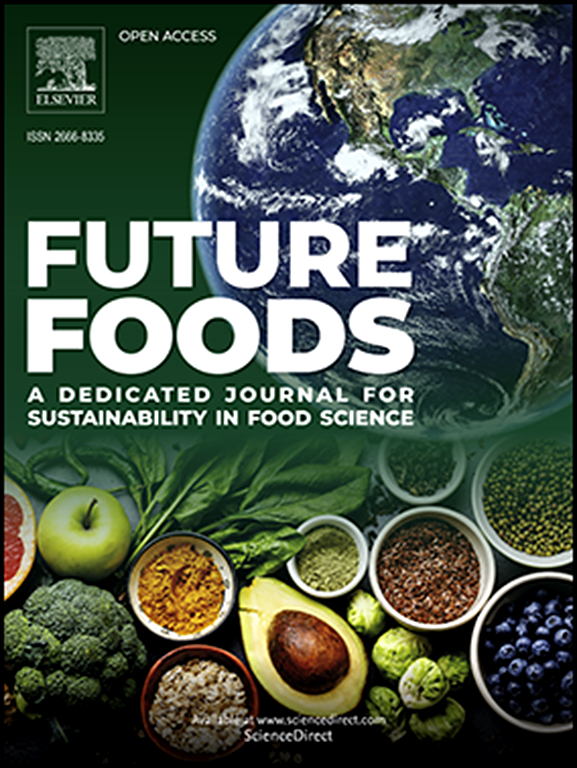Unveiling the protein profile and techno-functional potential of edible cricket protein concentrates: A comparative study of different body parts
IF 7.2
Q1 FOOD SCIENCE & TECHNOLOGY
引用次数: 0
Abstract
Edible crickets (Acheta domesticus) are a promising sustainable ingredient for diverse food applications. This study evaluated the protein characteristics and techno-functional properties of protein concentrates from cricket legs and antennae (LPC), head and torso (HPC), and whole body (WPC). Analyses included proximate composition, techno-functionality, and protein profiles, including Osborne solubility fractions, molecular weight distribution, amino acid profile, in-vitro digestibility, and ATR-FTIR structural analysis. LPC had the highest protein content (75.24 g/100 g d.w.), outperforming HPC (70.20) and WPC (71.88). Glutelins (21.45–28.28 %) and albumins (20.10–25.85 %) were the predominant protein fractions, followed by globulins (5.26–6.05 %) and prolamins (3.80–4.80 %) across all samples. LPC showed a superior foaming capacity (75.3 %) compared to WPC (71.2 %) and HPC (67 %), suggesting suitability for aerated food applications. However, LPC had a lower Protein Digestibility-Corrected Amino Acid Score (PDCAAS) of 0.73 compared to HPC (0.86) and WPC (0.84), due to reduced amino acid scores and in-vitro digestibility. ATR-FTIR analysis revealed abundant intermolecular β-sheets in all protein concentrates, indicating a tendency to form aggregates after processing. These findings highlight the potential of cricket protein concentrates from different body parts for diverse food applications, considering their distinct functional properties and limitations.
求助全文
约1分钟内获得全文
求助全文
来源期刊

Future Foods
Agricultural and Biological Sciences-Food Science
CiteScore
8.60
自引率
0.00%
发文量
97
审稿时长
15 weeks
期刊介绍:
Future Foods is a specialized journal that is dedicated to tackling the challenges posed by climate change and the need for sustainability in the realm of food production. The journal recognizes the imperative to transform current food manufacturing and consumption practices to meet the dietary needs of a burgeoning global population while simultaneously curbing environmental degradation.
The mission of Future Foods is to disseminate research that aligns with the goal of fostering the development of innovative technologies and alternative food sources to establish more sustainable food systems. The journal is committed to publishing high-quality, peer-reviewed articles that contribute to the advancement of sustainable food practices.
Abstracting and indexing:
Scopus
Directory of Open Access Journals (DOAJ)
Emerging Sources Citation Index (ESCI)
SCImago Journal Rank (SJR)
SNIP
 求助内容:
求助内容: 应助结果提醒方式:
应助结果提醒方式:


